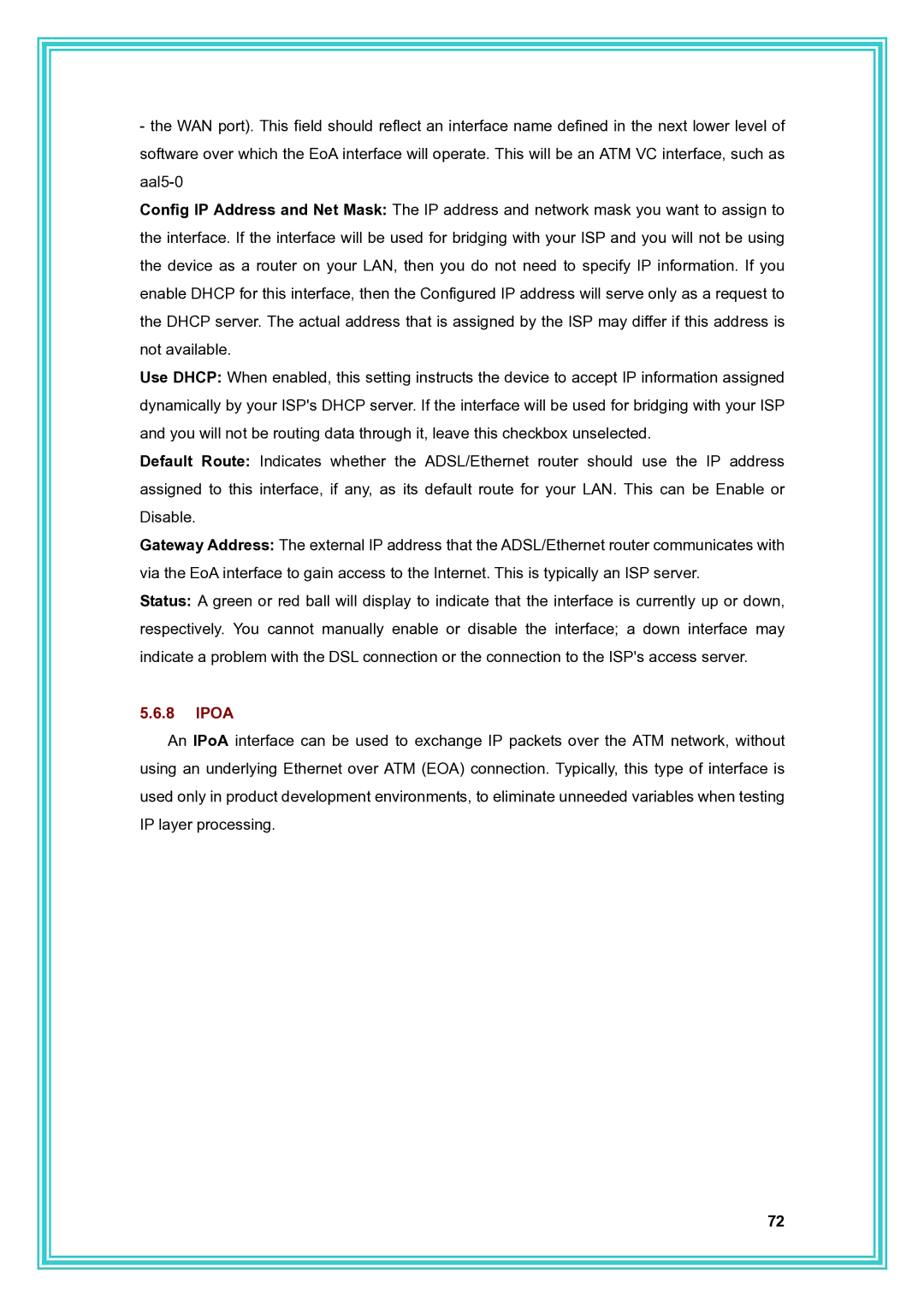
-the WAN port). This field should reflect an interface name defined in the next lower level of software over which the EoA interface will operate. This will be an ATM VC interface, such as
Config IP Address and Net Mask: The IP address and network mask you want to assign to the interface. If the interface will be used for bridging with your ISP and you will not be using the device as a router on your LAN, then you do not need to specify IP information. If you enable DHCP for this interface, then the Configured IP address will serve only as a request to the DHCP server. The actual address that is assigned by the ISP may differ if this address is not available.
Use DHCP: When enabled, this setting instructs the device to accept IP information assigned dynamically by your ISP's DHCP server. If the interface will be used for bridging with your ISP and you will not be routing data through it, leave this checkbox unselected.
Default Route: Indicates whether the ADSL/Ethernet router should use the IP address assigned to this interface, if any, as its default route for your LAN. This can be Enable or Disable.
Gateway Address: The external IP address that the ADSL/Ethernet router communicates with via the EoA interface to gain access to the Internet. This is typically an ISP server.
Status: A green or red ball will display to indicate that the interface is currently up or down, respectively. You cannot manually enable or disable the interface; a down interface may indicate a problem with the DSL connection or the connection to the ISP's access server.
5.6.8IPOA
An IPoA interface can be used to exchange IP packets over the ATM network, without using an underlying Ethernet over ATM (EOA) connection. Typically, this type of interface is used only in product development environments, to eliminate unneeded variables when testing IP layer processing.
72
